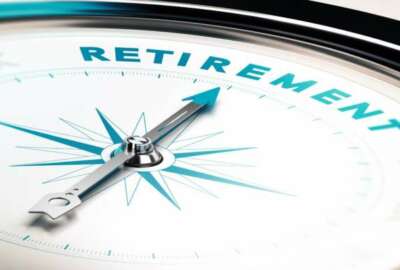The number-one job-related fear among federal workers (aside from getting fired) is probably that Congress will tamper with their retirement program. If it isn’t their biggest worry, it probably should be.
According to many surveys, a large number of Americans, anywhere from one-third to one-half, have no retirement savings. None. Their one and only source of income in retirement will be Social Security. By contrast, 90 percent of workers under the Federal Employees Retirement System are regularly putting money of their own into the Thrift Savings Plan, Uncle Sam’s in-house 401(k) plan. They get matching contributions from the government of up to 5 percent, based on how much they contribute. In a PBS Frontline feature on retirement in 2006 (before the Great Recession) it was reported that only about 30 percent of non-federal workers were investing in company-sponsored 401(k) plans. By contrast, 90 percent of working feds are contributing to their 401(k) plan, called the Thrift Savings Plan.
In a PBS Frontline feature on retirement in 2006 (before the Great Recession) it was reported that only about 30 percent of non-federal workers were investing in company-sponsored 401(k) plans. By contrast, 90 percent of working feds are contributing to their 401(k) plan, called the Thrift Savings Plan.
While the government switched retirement programs in the 1980s — going from the more generous Civil Service Retirement System to the Federal Employees Retirement System — it still provides and promises lifetime pensions to people who meet the age and service requirements. CSRS is a stand-alone program that provides benefits to retirees based on how long they worked, their age and their high-three year average salary. Under CSRS, workers can retire on anywhere from 40 percent to 80 percent of their final salary. That pension is linked to inflation as measured by the Bureau of Labor Statistics. Although most CSRS workers and retirees contribute (or contributed while working) to the TSP, most people can enjoy a comfortable retirement without it.
FERS is a three-legged program where employees get a less generous government annuity, pay into Social Security and contribute to the TSP. When the FERS program was established, experts predicted their TSP investments would provide anywhere from one-third to one-half the money they had in retirement.
Over the years, a growing number of American companies have run out of money to pay promised retirement benefits. By 2006, more than 18,000 companies had underfunded their pension plans. Some of them simply ended their programs. Others, including some advertising themselves as among the national’s most enlightened employers — have frozen their pension plans. In those cases, longtime workers keep the benefits they’ve earned. But don’t grow their retirement in future service. New employees are required to finance their own retirement via Social Security and their contributions to a 401(k) plan. Could it happen in government?
Richard Thissen, president of the National Active and Retired Federal Employees, has warned members that the current Congress might go after the FERS retirement program by eliminating it for future hires. That’s one of a long laundry list of “might happens” that includes introducing a voucher system to pay premiums in the federal employee health benefits program and shaving the rate of return for the treasury securities G fund of the TSP.
If Congress decided to eliminate the FERS retirement program for new hires — and that is a HUGE if — the next step further down the road could be to freeze benefits for current employees. It’s not at the top of any particular member’s hit list, but it’s definitely out there.
To check out the what-you-need-to-know-about-retirement primer from PBS, and for information on the state of private sector retirement plans, click here and remember, the report aired in 2006. Since then, the private sector retirement pictures has grown even gloomier.
Nearly Useless Factoid
By Michael O’Connell
Source: This is Archives
Copyright
© 2024 Federal News Network. All rights reserved. This website is not intended for users located within the European Economic Area.
